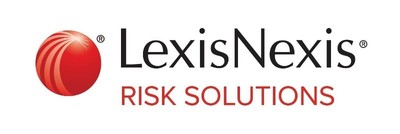Financial Institutions Struggle to Meet Customer Expectations in Fighting Authorized Transfer Scams, LexisNexis Risk Solutions Study Finds
Rhea-AI Summary
LexisNexis Risk Solutions released a study on the effectiveness of financial institutions (FIs) in combating authorized transfer scams. The study reveals that only 50% of FIs feel confident in their scam mitigation efforts. Additionally, 69% of FIs struggle to break a victim's belief in a scammer, and only 4% can alert customers to impersonation scams within 24 hours. Despite 81% prioritizing scam prevention, 64% face challenges with current solutions. FIs are encouraged to adopt advanced technologies and data-based insights to improve scam detection and prevention strategies, ensuring secure and efficient transactions for consumers.
Positive
- 81% of financial institutions prioritize mitigating more scams to prevent customer financial loss.
- FIs are taking a multilayered approach to scam detection and mitigation.
Negative
- Only 50% of financial institutions feel confident in their ability to mitigate authorized transfer scams.
- 69% of financial institutions find it difficult to convince customers they are being scammed.
- Just 4% of financial institutions can alert customers to impersonation scams within 24 hours.
- 64% of financial institutions face challenges with current scam mitigation solutions.
- Only
50% of organizations have confidence in their ability to stop scammers. - Sixty-nine percent (
69% ) find it difficult to break a victim's belief or trust in a scammer. - Just four percent (
4% ) of FIs can alert customers to scams involving impersonation of financial services employees within 24 hours.
The study, Defend Against Authorized Transfer Scams, finds that fraud risk and mitigation strategy leaders at US financial services institutions understand the importance of both detecting and mitigating scams effectively. However, they exhibit lower confidence in their organizations' capabilities and solutions for these efforts. While
Fraudsters are highly skilled at coaching targets to complete authorized transfer scams. They manipulate or deceive targets into transferring funds to them through various means, such as the false sale of goods, services or investments. They also use fraudulent payment instructions and impersonation schemes, including posing as romantic interests, fake businesses, charities, family or friends.
"Scams, fraud and financial vulnerability are on the increase. Meanwhile, consumers increasingly expect safer and more secure interactions and transactions," said Soudamini Modak, director of fraud and identity at LexisNexis Risk Solutions. "FIs must analyze digital and behavioral signals to implement better strategies for mitigating scams across multiple channels. It's important FIs detect scams and other fraudulent behavior without frustrating consumers by slowing legitimate transactions and risking customers abandoning their transactions."
Key Findings from the Study:
- Consumers hesitate to believe they are the target of a scam. Sixty-nine percent (
69% ) reported that convincing customers that they are the target of a scam is difficult. Many organizations (72% ) are trying to strike a balance between confidently proving to a target that they are being scammed and not divulging too much information. - Alerting customers in a timely manner once some scams are detected poses a challenge. Twenty-eight percent (
28% ) of FIs flag scams involving illegitimate orders for goods, services or investments to customers within 24 hours. However, only four percent of FIs can alert customers to scams involving the impersonation of financial services employees in the same time period. - Current capabilities and solutions are not enough to mitigate scams. Two in three (
64% ) of respondents reported challenges with their current solutions' ability to mitigate authorized transfer scams. This generation of scams and scammers requires additional systems for detection and the adoption of advanced technologies that use data-based insights to assess payor and payee risk, determine if outreach is necessary and attempt to mitigate a scam before it concludes. - Detecting target coaching, malicious transfers and mitigating scams requires a comprehensive strategy. FIs are taking a multilayered approach to scam detection and mitigation and aligning upgraded capabilities with their overall goals for scam detection strategy. Sixty percent (
60% ) of FIs that aim to enable more confident outreach to customers understand that it is an essential part of effective scam mitigation. Expanding automation and implementing solutions to detect risky behaviors gives FIs the confidence to identify a consumer as the target in a scam.
Download the Defend Against Authorized Transfer Scams study.
Methodology
LexisNexis Risk Solutions commissioned Forrester Consulting to conduct an online survey of 413 financial services directors and decision-makers at organizations in the US to evaluate fraud risk and mitigation strategies. Survey participants included decision-makers in IT, operations, fraud prevention, customer service, digital banking and product management. Questions provided to the participants focused on the current state and benefits of fraud mitigation strategies, as well as the current state and challenges of fraud risk. The study began and was completed in September 2023.
About LexisNexis Risk Solutions
LexisNexis® Risk Solutions harnesses the power of data, sophisticated analytics platforms and technology solutions to provide insights that help businesses across multiple industries and governmental entities reduce risk and improve decisions to benefit people around the globe. Headquartered in metro
Media Contact:
Ade O'Connor
+44 78 9091 8264
ade.o'connor@lexisnexisrisk.com
![]() View original content to download multimedia:https://www.prnewswire.com/news-releases/financial-institutions-struggle-to-meet-customer-expectations-in-fighting-authorized-transfer-scams-lexisnexis-risk-solutions-study-finds-302189071.html
View original content to download multimedia:https://www.prnewswire.com/news-releases/financial-institutions-struggle-to-meet-customer-expectations-in-fighting-authorized-transfer-scams-lexisnexis-risk-solutions-study-finds-302189071.html
SOURCE LexisNexis Risk Solutions







